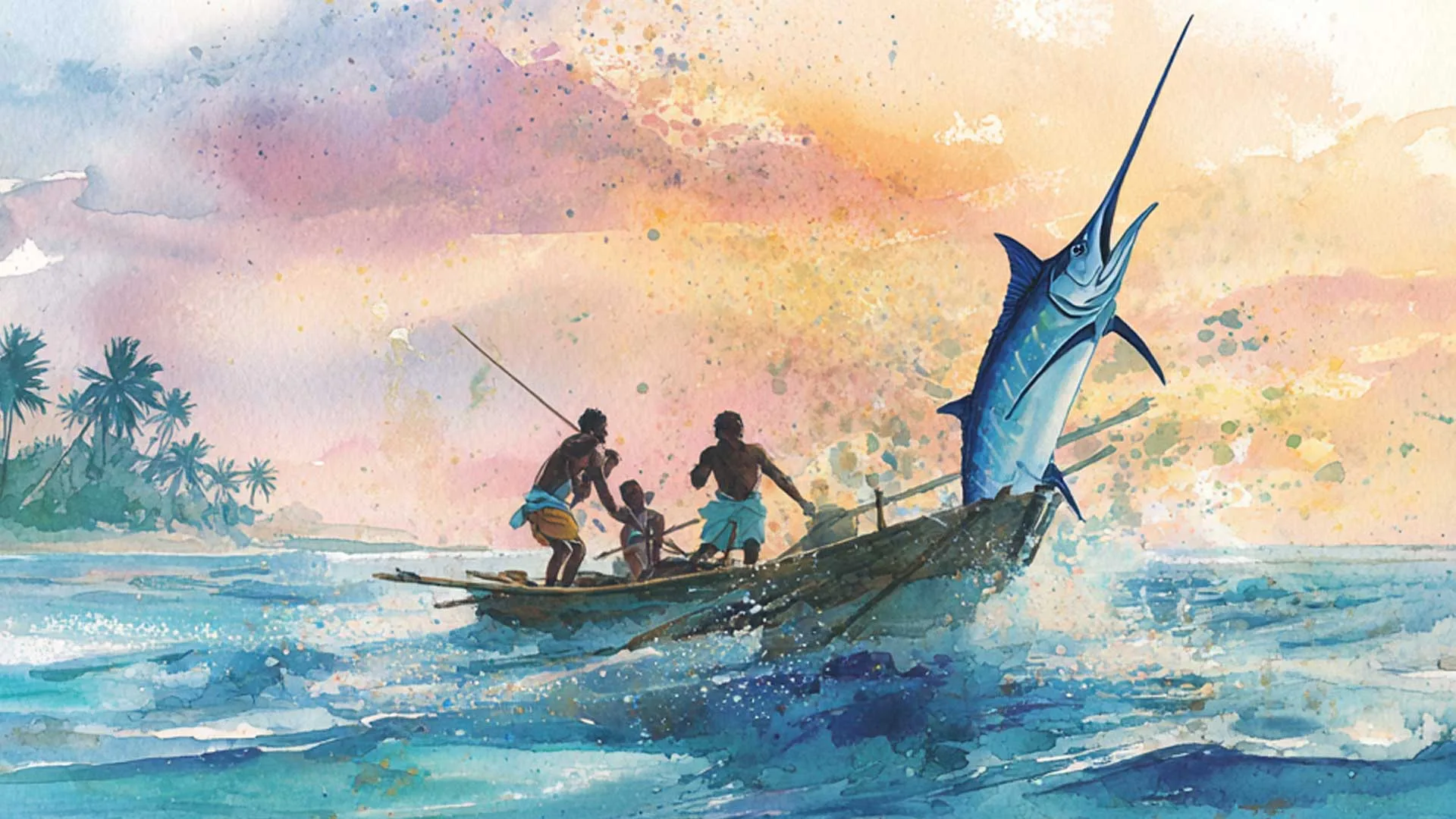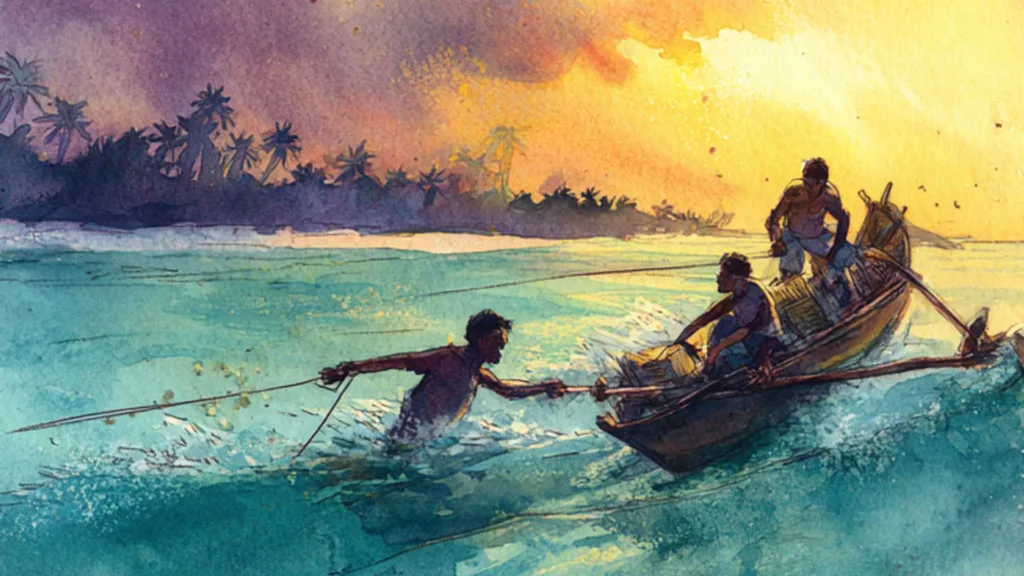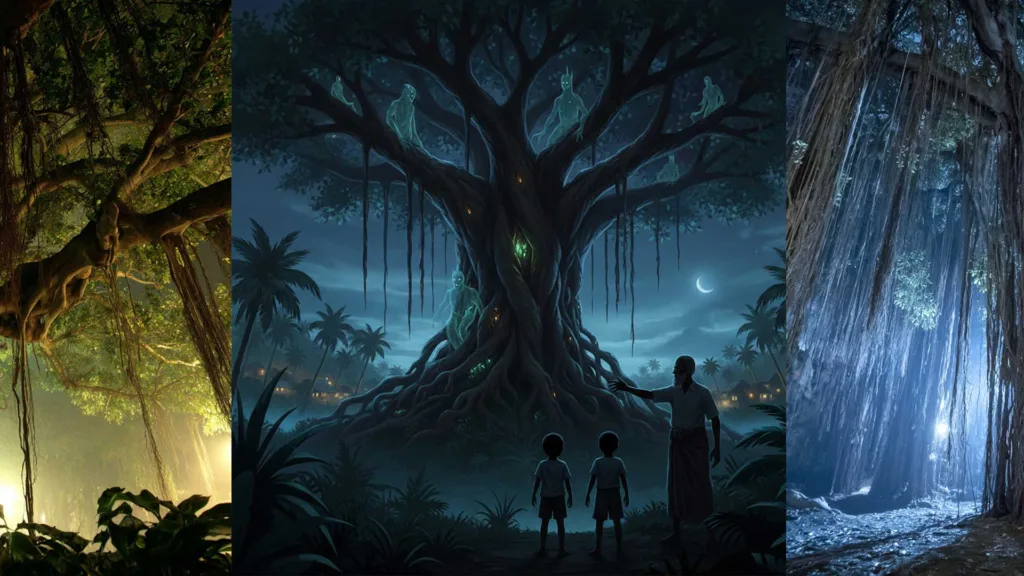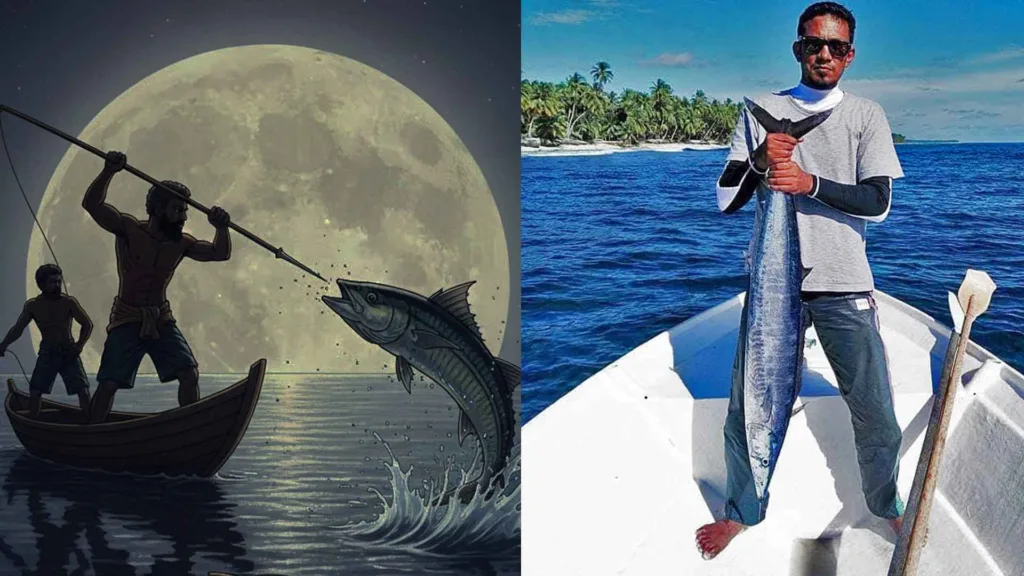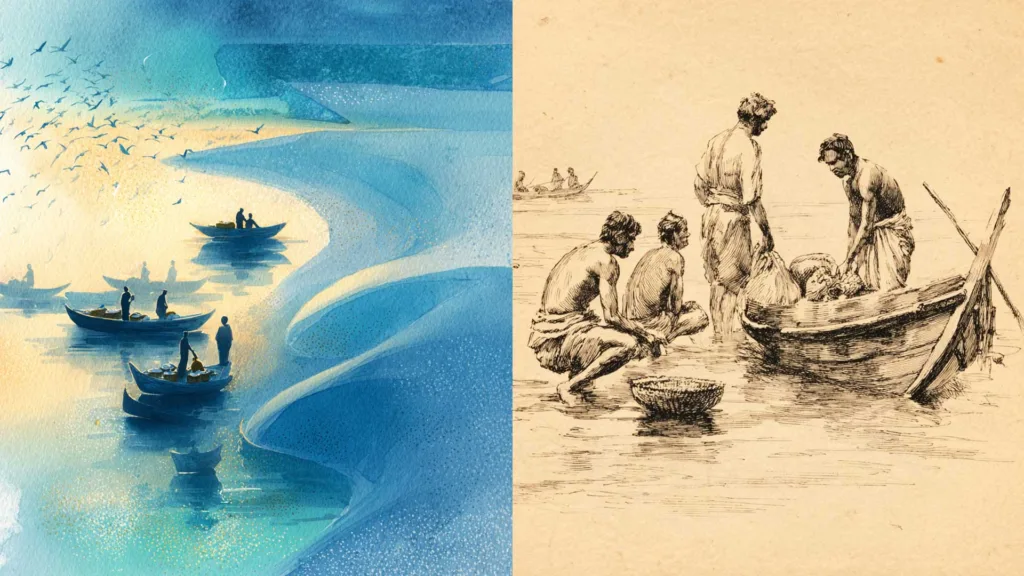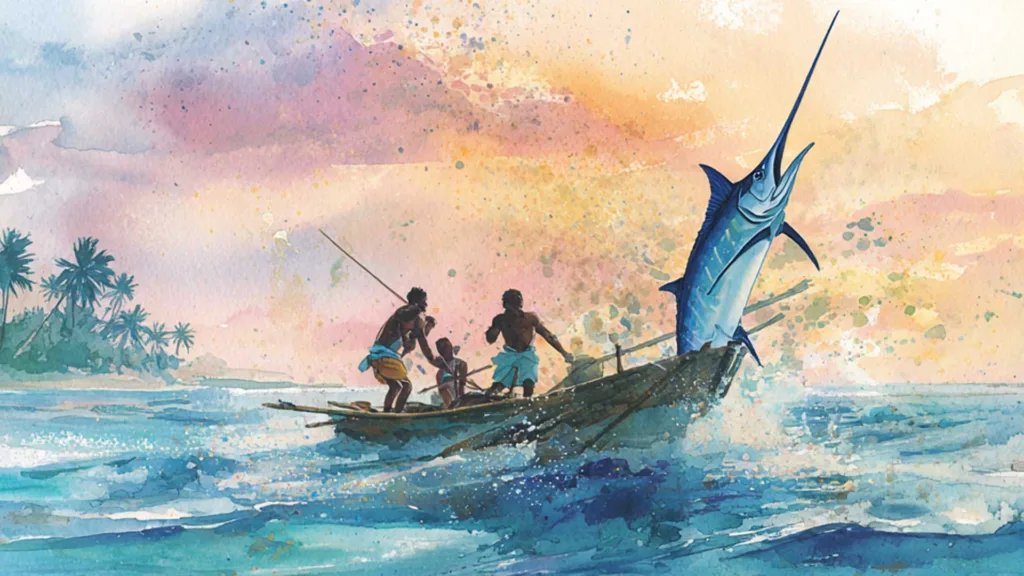
In the early 1970s, life on Fuvahmulah moved to the rhythm of the ocean. The island, standing alone in the far south of the Maldives, was shaped by wind, waves, and the daily routines of fishing. People rose with the sun, watched the tides closely, and relied on the sea as their main source of food and livelihood. Fuvahmulah’s signature fish—such as yellowfin tuna, skipjack tuna, giant trevally, and wahoo—cruised around the island sea, while tiger sharks, hammerhead sharks, and oceanic mantas guarded the breathtaking one-island atoll.
Just before dawn on a quiet morning, four local fishermen made their way to the shore off Rasgefannu beach. They carried only the essentials: oars, a coil of nano fishing line, and one small dead skipjack tuna to use as bait to catch the ocean’s most powerful predator—the swordfish. Their vessel was a small bokkura, its wooden sides worn smooth by years of salt and sunlight. It was a simple craft, but one they trusted.
The men pushed off from the sand, rowing across the rough reef flat where waves pounded at the reef crest and reached the open sea. They rowed for half an hour away from the island toward the northeast. Behind them, Fuvahmulah remained a silent silhouette against the early sky. Coconut palms rustled gently in the morning breeze, and the only sound was the soft splash of oars cutting through the water. Ahead of them, the open sea stretched into darkness, calm and expectant.
After nearly an hour of rowing, the sky began to lighten. As the horizon turned shades of gold and soft peach, they prepared their bait. The skipjack tuna was secured on a large, sharpened hook tied firmly to the nano fishing line. A heavy sinker was added to carry the bait deep into the dark water, far beyond where sunlight could reach.
They lowered the line slowly, feeling it slip smoothly between their fingers until the sinker pulled it into the depths. When the line settled, the ocean grew quiet again. The men relaxed into the familiar stillness of waiting. The man maneuvering the two oars, locally called “dhekedefaali jahaa meeha,” chewed betel nut; the chief fisherman took a small areca nut and cut it in half with a small knife called a “vaalhi,” ate both pieces with betel leaf, and tucked tobacco under his lip; and the two men at the center of the bokkura, tasked with maneuvering one oar each, watched the colors of the sky reflect off the water.
Time passed peacefully as they talked softly and listened to the gentle breathing of the sea. But without warning, the calm ended. The nano fishing line snapped tight with a sudden, powerful jolt that almost pulled one man overboard. He grabbed the line instinctively and shouted for the others. All four braced themselves, knowing immediately that something enormous had taken the bait.
The sea churned as the unseen creature pulled with tremendous strength. The fishermen leaned back with all their weight, gripping the nano as it cut into their palms. They pulled hard, but the creature below pulled harder, dragging the bokkura across the open water.
Minutes stretched into hours. The men took turns holding the line, their arms shaking and their fingers blistered. The bokkura drifted wherever the creature pulled it—sometimes sideways, sometimes backward, and sometimes spinning gently across the waves. The creature seized the bokkura in the open sea and dragged it toward the coast of Thoondu Beach, pulling the vessel with such force that the island’s silhouette wavered in and out of view. But as the creature’s strength began to falter, the oarsmen seized their chance and rowed fiercely to steer the bokkura back toward the island. It was a daunting struggle.
By mid-afternoon, exhaustion weighed heavily on their bodies. But slowly, the powerful pulls on the line began to weaken. The creature’s movements became slower and more strained. The fishermen exchanged a quiet, knowing look. They had battled for more than five hours, and they were beginning to win the fight. The journey back to Fuvahmulah was slow, each stroke of the oars heavy but filled with pride.When they finally reached the waters off Bandahaafanno Beach, signs of hope began to fill their hearts.
“It’s coming up,” one murmured.
A shadow rose from the deep, growing larger as it neared the surface. Sunlight flashed off something sleek and metallic beneath the waves. Then, with a burst of foam and spray, the creature broke through the water. It was a giant swordfish, nearly 25 feet long, glistening silver and blue. Its long, razor-sharp bill shimmered like a blade forged from the sea itself.
The swordfish thrashed wildly, shaking the bokkura with its final bursts of strength. The fishermen watched in awe. They had heard stories of fish this size, but stories were nothing compared to the massive creature before them, alive and furious.
Working together, they looped ropes around the swordfish and tied it securely to the side of the bokkura. The fish was almost as long as the boat. Although exhausted, they rowed toward Rasgefannu Beach, driven by the adrenaline and hope of a record-breaking catch.
As the bokkura approached the shore of Rasgefannu beach, islanders spotted the huge shape in the water and gathered along the beach. Everyone ran toward the waves, shouting with excitement. Elders stepped forward, leaning on canes, and stared in disbelief at the enormous fish tied to the small boat.
When the bokkura reached the beach, people rushed forward to help pull the swordfish ashore. A hush fell over the crowd as everyone took in its size. It was unlike anything the island had seen in years. The four fishermen, exhausted from their eight-hour struggle, couldn’t help but smile quietly.
That evening, the swordfish was cut and shared with every family in the district. True to tradition, no household was left out. As night settled over Fuvahmulah, stories of the day spread from veranda to veranda, told in the warm glow of lantern light.
Long after the last piece of meat was eaten, the tale remained—the day when four men from Fuvahmulah fought a giant of the deep sea and returned home with a legend the island still remembers. The local names for swordfish are Thungandu Hibaru and Kanneli Hibaru. This story has been shared by many fishermen in Fuvahmulah, especially the elder fishermen. I first heard it from Hussainbe, an experienced reef fisherman. To learn more and to prepare this article for the website, I met the well-known fisherman “Keulhaa” from the Miskimago district. He recounted the full story to me during an interview in April 2024.
